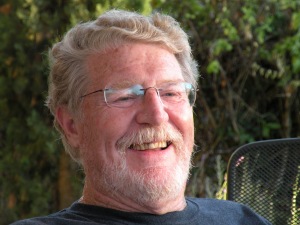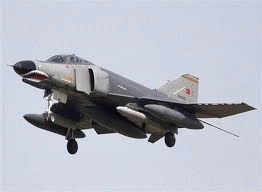What was that Turkish F-4 Phantom II up to when the Syrians shot it down?
Ankara said the plane strayed into Syrian airspace, but quickly left and was over international waters when it was attacked, a simple case of carelessness on the part of the Turkish pilot that Syrian paranoia turned deadly.
But the Phantom -- eyewitnesses told Turkish television that there were two aircraft, but there is no official confirmation of that observation -- was hardly on a Sunday outing. According to the Financial Times, Turkey's Foreign Minister, Ahmet Davutoglu, told the newspaper "the jet was on a test and training mission focused on Turkey's radar defense, rather than Syria."
Translation: the F-4 was "lighting up" a radar net. It is a common -- if dangerous and illegal -- tactic that allows one to probe an opponent's radar system. Most combat radar is kept in a passive mode to prevent a potential enemy from mapping out weaknesses or blind spots that can be useful in the advent of an attack. The probes also give you valuable information on how to neutralize anti-aircraft guns and ground to air missiles.
"Lighting up" radar was what the US Navy EP-3E Aries II was doing near China's Hainan Island when it collided with a Chinese interceptor in 2001. Nations normally take a very dim view of warplanes entering their air space, particularly if there is tension between the countries involved.
As a warplane, the F-4 is a pretty ancient. It was introduced back in 1960, and became the mainstay of the U.S. air war in Southeast Asia. In its day it was a highly capable aircraft, able to hold its own against interceptors like the MIG-21 in a dogfight, and could also carry heavy bomb payloads. It was also cheap and relatively trouble free, unlike the current crop of US high performance aircraft.
It is doubtful that Syria indentified exactly what the Turkish plane was, just that an unidentified warplane, flying low -- generally the altitude one takes when trying to avoid radar -- was in Syrian airspace. Paranoia? In 2007 Israeli warplanes -- US-made F-16s, not Phantoms -- slipped through Syria's radar net and bombed a suspected nuclear reactor.
Even if Syria identified the plane as a Phantom, they could have taken it for an Israeli craft. Israel was the number one foreign user of F-4s, although they retired them in 2004. Indeed, the Turkish Phantom might even have begun life as an Israeli warplane.
If the Syrians are on hair-trigger alert, one can hardly blame them. The US, the European Union (EU), and NATO openly admit they are gunning to bring down the Assad regime. Turkey is actively aiding the Free Syrian Army organize cross-border raids into Syria, and it is helping Saudi Arabia and Qatar supply arms and ammunition to the rebels.
For Turkey to send a warplane into Syrian airspace -- or even near the Syrian border -- on a radar mapping expedition at this moment was either remarkably provocative or stone stupid. The explanation could be more sinister, however.
NATO has established a command and control center in Iskenderun, Turkey, near the Syrian border, that is training and organizing the Free Syrian Army. It surely has a sophisticated setup for tapping into Syrian electronic transmissions and, of course, radar networks. If NATO eventually decides to directly intervene in Syria, the alliance will need those electronic maps. NATO aircraft easily overwhelmed Libya's anti-aircraft systems, but Syria's are considerably more sophisticated and dangerous.
There are a number of things about the incident that have yet to be explained. Turkey says the F-4 was 13 nautical miles from Syria when it was attacked -- which would put it in international waters -- but it crashed in Syrian waters. Damascus claims the plane came down less than a mile from the Syrian coast.
Turkey says one of its search planes was shot at as well -- the Syrians deny this -- and has called for a meeting of its NATO allies. So far, Ankara is only talking about invoking Article Four of the NATO treaty, not Article Five. Four allows for "consultations"; Five would open up the possibility of an armed response.
A thorough investigation of the incident seems in order, although Turkey's Davutoglu says, "No matter how the downed Turkish jet saga unfolds...we will always stand by the Syrian people until the advent of a democratic regime there." In short, regardless of what happened, Turkey will continue to pursue regime change in Damascus.
The Assad regime's heavy-handed approach to its opponents played a major role in sparking the current uprising, but the default position of regime change by the EU and NATO has turned this into a fight to the death. Assad is broadly unpopular, but not universally so, and the support of the regime is not limited to his own Islamic sect, the Alawites, or other minorities, like the Christians.
Nor is all of the opposition a paragon of democratic freethinking. The heavy role played by Saudi Arabia and Qatar in supplying arms and money to the rebels, means the deeply conservative Salafist sect of Islam has a major presence in the resistance. This is exactly how the Afghan mujahedeen mutated into the Taliban and al-Qaeda.
(Note: You can view every article as one long page if you sign up as an Advocate Member, or higher).






